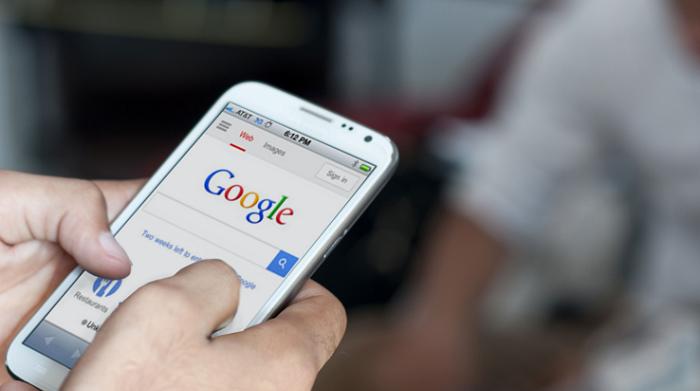Google extended the deadline for mobile-first indexing to get 100%

Who doesn’t know about mobile-first indexing? I guess every webmaster, SEO, website operator, digital marketer, and any person in the field of online marketing would definitely know about it. It is because, for many years, Google has been working on mobile-first indexing to crawl the web pages content on smartphones first than desktop or laptop. There is also no doubt that Google prefers more mobile-friendly sites than desktop because the majority of users today search on smartphones. This is the reason why Google put so much emphasis on mobile-first indexing. And Google decided to enable it for all sites in search in September 2020. Interesting no?
But wait, guys, Google has extended the deadline date for mobile-first indexing. Do you know about the update? If not, then this article is for you. Here you will explore everything about the mobile-first indexing update.
Let’s make a start now.
Google extended the deadline for mobile-first indexing till March 2021
Yes, you read it right. Now the date has been extended to now March 2021. In July month only, Google decided to push off the deadline 100% into mobile-first. Let me tell you that the previous deadline was September 2020. But now Google changed the date. Many of you might be thinking why the date has changed, right. Well, the reason is quite familiar to you. Can you guess? Yes, COVID-19 pandemic. Since the COVID-19 epidemic hit the world, the digital marketing business witnessed a huge loss worldwide. This is the reason Google said that they are now going to push the deadline back.
Additionally, this new date will give site owners more time to prepare during this vicious time. On July 22 morning, Google decided to push the deadline to March 2021. Here is Google’s official announcement, “Our initial plan was to enable mobile-first indexing for all sites in Search in September 2020.” Google said it realizes “that in these uncertain times, it’s not always easy to focus on work as otherwise,” Google thus “decided to extend the timeframe to the end of March 2021.”
What are the issues Google saw in posting sites to mobile-first indexing?
While posting about updates, Google also said that it has seen issues sites making that can cause issues with the site that will be pushed to mobile-first indexing. In case, the site is pushed to mobile-first indexing and it has these issues then this will impact the rank of the site greatly on Google. The impact might be worse, you never know.
Make sure Googlebot can access and see your content easily
Google has released a list of important abbreviations that you need to double-check between your desktop version and mobile version of your site. Here these are-
#Robot meta tags on mobile version
The first thing you need to look at here is meta tags. The meta tag you use for the mobile version should be the same for desktop versions as well. What will happen if you use different meta tags? If you do so, then Google might not able to index or follow links on your page when your site is enabled for mobile-first indexing.
#Lazy loading on mobile version
We are fully aware that lazy loading makes users leave your site in a second. Loading on mobile for images and videos is a common issue nowadays. To make your site load fast, Google recommends you follow lazy-loading best practices. Let’s take an example, your desktop site has 10 images and mobile has only 2 images. Until the user clicks on ‘+’, they will not be able to see the images on your site. If this happens on your mobile version then Googlebot will not see those images. The result is your site will not get index or shown in Google images.
#Be aware of what you block
There will be times when the resources on your desktop would be different from the mobile version. This will be difficult for Google to crawl your site URLs. So make sure you’re not disallowing crawling of them with your robots.txt.file. For instance, blocking the URLs of .css files will prevent Googlebot from providing your pages correctly. It will harm the ranking of your pages in search. Likewise, when you block images URLs then it will make your images disappear from Google images.
#Make sure primary content is same on both desktop as well as mobile
Another thing you need to look at here is the content quantity. If your mobile version has less content than desktop version then you need to update your mobile version so that the equilibrium gets the same. Also, remember one thing that the content on mobile will only be indexed and ranked in search. Having less content on the mobile version might result in losing traffic when Google enables mobile-first indexing for your site.
Furthermore, the heading of the content should same on both mobiles as well as desktop versions. If you miss including relevant headings then it will negatively impact your page’s visibility in search.
#Check your images and videos
This is the last point you need to read further. Here Google talks about adding high-quality images and videos to the mobile version. For image quality, Google says don’t use too small, low resolution, low-quality images for index.
Alt attributes for images, Google says using less-meaningful alt attributes images might negatively affect your images shown in Google images. For images URLs, Google says not to use different URLs for desktop and mobile versions of your site otherwise you will see traffic loss from Google images. It is because new image URLs may take up more time to understand what the URL is all about.
For video markup, if your desktop site uses schema.org’s videoObject structured data to describe videos then your mobile version also includes the VideoObject. If you don’t do so then Google might face trouble while indexing your video content.
For video and image placement, here you need to make sure that your images and videos are easy to find on Google. The location should be easily accessible otherwise it will affect user experience.
The bottom line
Finally, I would only say that the new deadline released by Google for mobile-first indexing is just to give users plenty of time in this pandemic to improve their site performance on both desktops as well as mobile. Also, don’t forget to follow the instructions Google has provided to you for improving your site content. I have mentioned in article, you may read again.
For more updates subscribe our website, till then keep reading and keep sharing.


